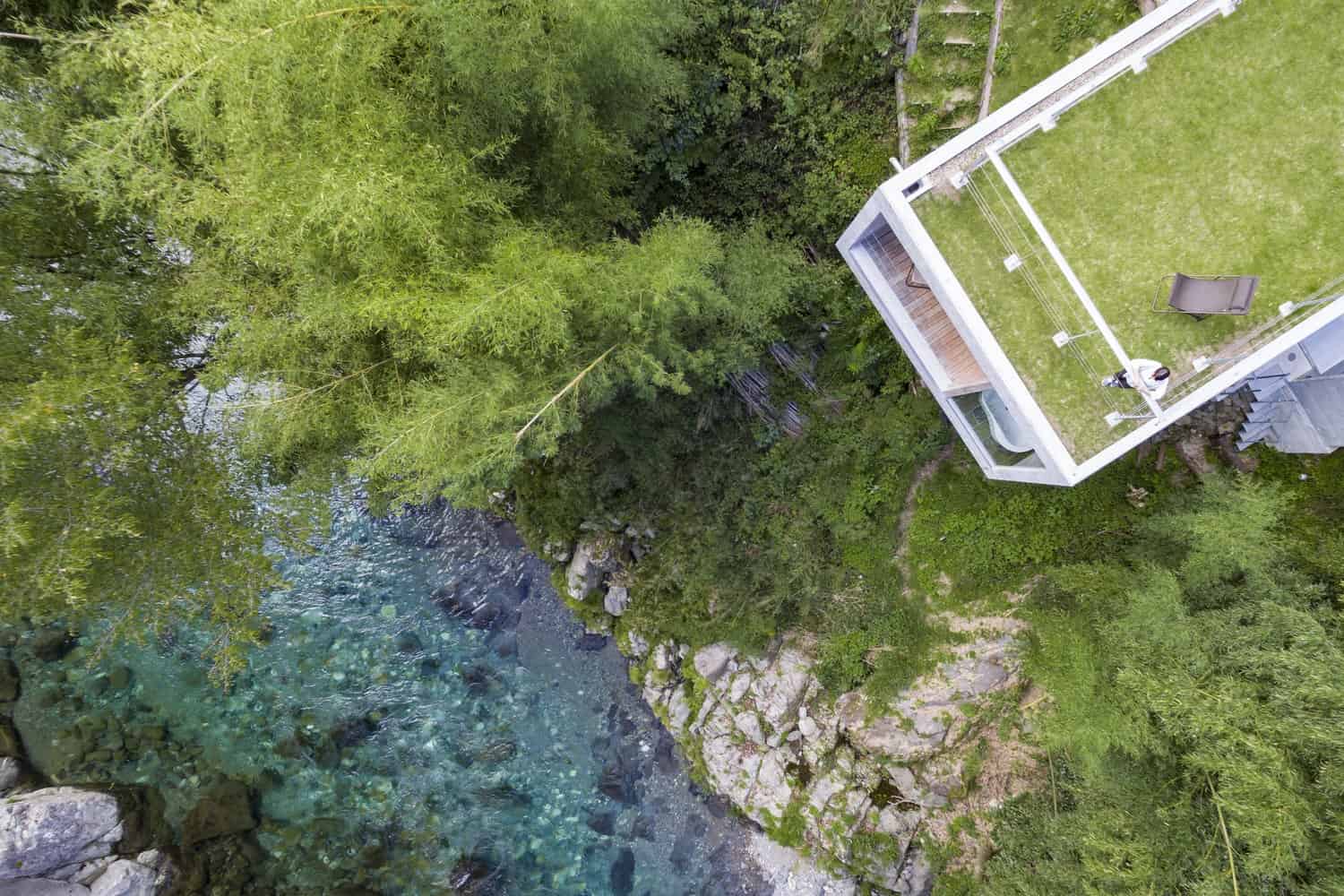Project: Cliff House
Architects: PLANET Creations Sekiya Masato Architecture Design Office
Location: Tenkawa, Japan
Area: 775 sf
Photographs by: Shinkenchiku-sha, Akira KITA
PLANET Creations Sekiya Masato Architecture Design Office have designed the spectacular Cliff House located in the Tenkawa village in Japan. This contemporary dwelling is placed just 2,000 feet above sea level but is surrounded by the epic Omine mountain range. The location provides access to breathtaking views so the design aims to make the most out of it.


The site is located in Tenkawa village, located 600 meters above sea level, surrounded by the Omine mountain range, in the central part of Yoshino gun, Nara Prefecture. It is a holiday villa for a doctor and his wife, who love ‘ayu’ fishing. Before the eye is virgin forest, one of Tenkawa’s one hundred lovely sights, and I decided that the villa needs to be a space that included a view across the forest and the majestic waters of Ten River, a branch of the Kumano River source stream. However, even in the initial stage of planning, when the owner suggested that he would be satisfied with a simple fishing cabin, I perceived difficulties. A large percentage of the site was a steep slope inclining 17 meters toward the Ten River, and the flat area was only 6 meters square, so once parking for two cars was established, there was no room for a building.
In view of the possibility of the sharply inclined riverbank collapsing or the river rising, it would be dangerous to set a tall pillar on the shore and support the residence on that side, but if we built a two-floor structure beside the road, with parking on the first floor and a residence on the second, the lovely scenery would suffer. My solution was to dig down nearly to the bedrock and sink the building into the ground, then extend it out into the air over the river. The key to the structure is the creation of balance.
It has a structure like a balance, installed on flat bedrock, with a ruffle concrete pillar as a fulcrum, and a mass of concrete to be a counterweight. As a result, we created a 6 meter cantilever with a tubular reinforced concrete frame of 5.2 x 2.5 m, and we were able to secure sufficient internal space. The interior plan is partitioned longways into the kitchen/laundry/bathroom space and living space, and the end that extends outwards is wide open to the forest and river. The area most needing light is the deck area, the next is the living / dining room and last is the bedroom, so they are arranged in this order. Each area is separated by sliding doors that can be folded back completely, and by opening the sliding doors, the view of the green landscape flows through to the bedroom.
This website uses cookies.